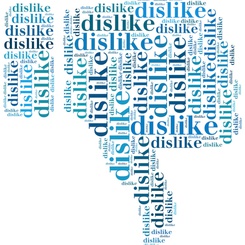1. Get active in the blogosphere
There are many benefits to maintaining a blog: First, writing thoughts down will help you clarify your ideas. And by putting these ideas in the public domain, a blog will generate dialogue and exchange with others, helping to further clarify your ideas. As an added bonus, a blog will also help you brand yourself as an expert on a given subject. Most importantly, as the editor of a blog, you will learn firsthand about how difficult it can be to generate interest in an idea. Through trial and error, you can therefore learn how to better speak with your audience.
In the classroom, I always encourage students to start a blog. Sometimes there is a domino effect: as one student starts to share work, others may feel pressure to start. And today there are so many well established user friendly blogging options – like Wordpress and Blogger – there are no more technical barriers.
2. Pare down video content to the essentials
The more digestible the information, the easier it is to share. That’s why it’s important to keep video content short and sweet. New tools like live streaming on YouTube might be tempting, but the short “how to” video is often more effective. The same goes for webinars: it’s not always easy to get your desired audience together for a webinar. And often times, those who miss out, aren’t going to watch the webinar video in full. It’s still fair to say that the optimal video length is about 3 or 4 minutes.
3. Organize more virtual meetings
Getting people together to discuss an idea and help develop it is not always easy in today’s fast-paced world. Virtual meeting tools like Google+ Hangouts are great because they make it easier to deal with conflicting schedules and geographical constraints. People generally find it easier to fit these kind or virtual meetings into their schedules because they don’t require any travel time. But, unlike a traditional conference call, you get to see everyone face to face which generally makes the meeting more dynamic. I often make Google+ Hangouts a requirement for students.
4. Find a micro-blogging balance
In the office and in the classroom, Facebook and Twitter are too often seen as distractions. It’s frustrating when you look over the shoulder of someone who should be engaging in a meeting or in a class discussion and see that they are checking their personal profile. But at the end of the day, there is no way we can completely bar personal social media surfing. It’s more important to ask how we can meet them in the middle. One way of doing this is engaging productive exchanges on these sites. An employer could encourage employees to live tweet at a conference to share their knowledge with the rest of the team in real time. In the classroom setting, some professors have taken to engaging dialogue through twitter – here twitter can become a tool to help overcome the difficulty of teaching a very large group.
Plus, remember that Facebook and Twitter don’t need to take over your life. People should use more of the scheduling services through social media dashboards such as HootSuite. Using HootSuite, we can time the updates on various social networks without actually going to any of those networks. For example, I can schedule my status updates for Facebook fan page such that my ex students in the US get to read them when they are going to the office or taking a break in the afternoon. I also schedule Tweets at times because some of my followers are in the Europe and I want them to read those Tweets. So, using the dashboard we achieve two things: a) we don't visit social media sites often and waste time in switching between them. b) we can plan the release of information more carefully. I know of one blogger who writes all her blog posts on Sundays and then schedules the release through the week.
5. Communicate a healthy mix of shared and original content
People value original content. However, it's time consuming and requires lot of structure in the way we think and work. I would say 10%-90% mix of original to shared content is reasonable. For the original content, keep in mind two words: "emotional story". People love stories. And they love awe-inspiring stories even more. Apart from this, people also like to read and spread something that can increase their social status. They want to share witty articles not mundane and boring ones. They want to look smart to their peers and that's why they would share intelligent content. As a professor I have used "practical use" of content to my advantage. My most read blog post has more than 30K reads and it basically gives 4 examples of a common marketing strategy matrix known as "Ansoff Matrix". If you Google it, the chances are that my link will be in the top three.









